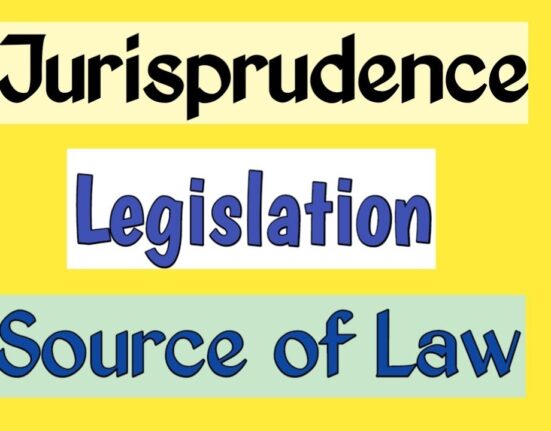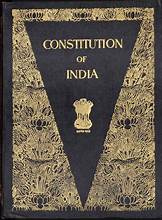Neha Jain, a 2nd–year law student from Lala Lajpatrai College of Law, Mumbai University has written this article on “LOCAL SELF-GOVERNMENT AND ITS HISTORICAL EVOLUTION”.
INTRODUCTION
Local self-government and its historical evolution is a transformative concept that brings governance authority to the grassroots level of society. It encourages active participation and administration by those who understand the intricacies and needs of their local communities. In India, this system of governance has taken root through various tiers of local bodies, making it an essential part of the democratic framework.
Local self-government and its historical evolution, an essential pillar of democracy, has played a significant role in shaping the governance landscape of India. Rooted in its ancient past and evolving through colonial rule and post-independence reforms, local self-government has been pivotal in decentralizing power, fostering community participation, and addressing the diverse needs of India’s vast population.
India’s governing structure is a multi-tiered system that encompasses the central government, state governments, and local self-government bodies. At the grassroots level, local self-government bodies play a pivotal role in democratic governance. These bodies consist of democratically elected representatives who empower communities to manage their own affairs effectively. India’s local self-government system has evolved over the years and encompasses various forms, reflecting the country’s diversity and commitment to participatory governance.
STRUCTURE OF LOCAL SELF GOVERNMENT
The local self-government system in India comprises two major forms, each tailored to suit the distinct needs of urban and rural areas.
Urban Areas:
In urban areas, including cities and towns, the mantle of local self-governance is shouldered by municipalities and corporations. These urban local bodies are entrusted with the responsibility of managing the intricate urban landscape and addressing the diverse challenges that arise in densely populated areas. These urban local bodies tackle the complexities of urban living, focusing on urban planning, public services, and community well-being.
Municipal Corporations:
Municipal corporations, also known as Mahanagar Palikas, oversee areas with populations exceeding one million. These corporations handle the complexities of megacities, focusing on infrastructure development, public services, and urban planning.
Municipalities:
Municipalities, or Nagar Palikas, are responsible for areas with populations under one million. They cater to the needs of smaller urban communities, ensuring that essential services and urban development initiatives are effectively carried out.
Nagar Panchayats:
For areas undergoing the transition from rural to urban settings, Nagar Panchayats or Town Councils bridge the gap. These bodies facilitate the transformation process, adapting governance to the changing needs of the population.
Rural Areas:
In rural India, local self-governance is facilitated by the establishment of Zila Parishads, block samitis, and gram panchayats. These bodies work in coordination to address rural development challenges, promote social justice, enhance infrastructure, and promote grassroots participation and community-driven development.
Zila Parishad:
At the apex of the rural self-government structure stands the Zila Parishad, or district council. This body coordinates and supervises the activities of the lower tiers, ensuring effective implementation of rural development programs.
Panchayat Samitis:
Below the Zila Parishad are Panchayat Samitis or block councils. These entities are responsible for overseeing a cluster of Gram Panchayats, facilitating coordinated development efforts at the block level.
Gram Panchayats:
The foundation of rural self-governance lies in Gram Panchayats or village councils. Every village has a Gram Sabha, which includes all adult villagers. The Gram Sabha elects the members of the Gram Panchayat, ensuring a direct democratic connection.
EVOLUTION OF LOCAL SELF GOVERNMENT
Local self-government in India has a rich historical evolution, from its ancient roots to modern governance structures. The process of decentralization gained momentum even before India’s independence, with varying perspectives on its scope and nature.
The journey of local self-government’s evolution in India is marked by several key moments. The British colonial era witnessed a disruption of these indigenous systems, followed by attempts to reestablish local governance mechanisms. The Bengal Municipal Act of 1884 introduced elected municipal bodies in major cities, serving as a precursor to modern local self-government. The architecture and power dynamics of local self-government underwent intense deliberation. Numerous committees were formed by the central government to devise a cohesive approach to devolving powers, managing finances, and shaping the structure of these local bodies.
One of the earliest forms of local self-governance in India was manifested in village communities carrying out self-governance functions. Over time, these structures evolved into the Panchayat Raj System, which remains one of the oldest forms of local self-government. The Panchayati Raj System emerged as a significant milestone, bringing grassroot democratic institutions like Panchayats and Municipalities into focus. This marked a crucial shift towards empowering local communities and promoting participatory governance.
Lord Rippon’s
Lord Rippon’s initiative in 1882 led to the creation of elected local bodies, earning him the title of the “Father of Local Self-Government”. In 1919, the Government of India Act further strengthened local governance by solidifying village Panchayats in several provinces.
Mahatma Gandhi advocated for village republics and a principle of subsidiarity, emphasizing the importance of empowering local communities. Conversely, leaders like Jawaharlal Nehru and B.R. Ambedkar favored a more centralized approach, aiming for a strong central authority. The introduction of the 73rd and 74th constitutional amendments marked a turning point, mandating the presence of local self-government bodies in both urban and rural areas and ensuring regular elections. It was groundbreaking milestones that entrenched local self-governance in India’s constitutional fabric. These amendments granted constitutional status to Panchayats and Municipalities, ensuring their uniform presence across the country.
THE BENGAL CHOWKIDAR ACT, 1870
In 1870, the Bengal Chowkidar Act initiated the revival of the traditional village panchayati system in Bengal. This law gave district magistrates the power to establish panchayats with chosen members in villages. These panchayats were responsible for collecting taxes to fund the chowkidars, or watchmen, appointed by them.
FATHER OF LOCAL SELF-GOVERNMENT: LORD RIPPON
Lord Rippon, an eminent British administrator who played a pivotal role in establishing modern local governance systems. His efforts in the late 19th century led to the creation of elected local bodies, marking a significant shift towards decentralized administration. Lord Rippon’s initiatives laid the foundation for participatory governance at the grassroots level and set the stage for further developments in local self-government. His vision and advocacy for empowering local communities earned him this distinguished title, as he championed reforms that promoted transparency, inclusivity, and effective management of local affairs.
BALWANTRAI MEHTA COMMISSION
The Balwantrai Mehta Commission, established in 1957, was a landmark initiative in India aimed at revitalizing the community-level governance system. Chaired by Balwantrai Mehta, the commission recommended the establishment of three-tier Panchayati Raj institutions – village, block, and district levels. This decentralized approach aimed to empower local communities, enhance grassroots participation, and address rural development challenges effectively. The commission emphasized the democratic importance of Panchayats and suggested transferring certain functions, funds, and functionaries to these institutions, marking a significant step towards decentralization. However, it did not develop the requisite democratic momentum and failed to cater to the needs of rural development.
THE K. SANTHANAM COMMITTEE
The K. Santhanam Committee, established in 1963, was tasked with specifically examining the matter of PRI (Panchayati Raj Institutions) finances. The committee’s recommendations continue to influence ongoing discussions on the subject like empowering Panchayats with the authority to impose specific taxes on land revenues, property tax, etc. Consolidating and making unrestricted all grants and subsidies provided at the state level. Proposing the establishment of a Panchayat Raj Finance Corporation responsible for assessing the financial resources of PRIs at all levels, extending loans and financial aid to these local governing bodies, and assisting with non-financial needs of villages. The committee’s proposals have significantly contributed to shaping perspectives and dialogues concerning PRI finances, emphasizing the importance of granting financial autonomy and resources to local self-governance institutions.
THE ASHOK MEHTA COMMITTEE
The Ashok Mehta Committee was formed by the Janata government in 1977 to investigate the reasons behind the underperformance of Panchayati Raj Institutions (PRIs) and propose ways to strengthen them. It advocated a two-tier Panchayati Raj system comprising Zilla Parishads at the district level and Mandal Panchayats at the grassroots level, deviating from the three-tier model recommended earlier. The committee emphasized constitutional protection for PRIs, enhanced decentralization of power, and regular elections with political party participation. It suggested seat reservations for weaker sections, dual seats for women, sufficient financial resources, and people’s engagement in development. Although its recommendations were not widely implemented due to political changes, a few states, like Karnataka, adopted them. Notably, both committees overlooked the importance of PRIs as units of self-governance.
GVK RAO COMMITTEE
In 1985, the GVK Rao Committee was established to reevaluate challenges hindering the efficiency of PRIs. It proposed empowering PRIs below the district level with roles in planning, overseeing, and executing rural development initiatives. The committee highlighted the significance of the block development office as a crucial entity for rural development coordination.
THE L.M. SINGHVI COMMITTEE
The L.M. Singhvi Committee, in 1986, continued the exploration of PRIs. It emphasized the Gram Sabha (village assembly) as the foundation of decentralized democracy and envisioned PRIs as self-governing bodies to foster public engagement in planning and development. The committee recommended constitutional recognition, protection, and preservation of local self-government through a new chapter in the Constitution. It expressed concern about irregular elections and deliberated on the role of political parties in Panchayat elections. It suggested that the non-involvement of parties should be a consensus rather than enforced legislatively. This stance has divided PRI advocates into two camps: those like Jayaprakash Narayan, who promotes partyless democracy, and those like Asoka Mehta, who endorse political party participation for empowering economically disadvantaged candidates through strong organizational support.
73RD CONSTITUTIONAL AMENDMENT ACT, 1992
The 73rd Amendment Act, commonly known as the Panchayati Raj Act, was introduced with the primary objective of strengthening the Panchayati Raj institutions and democratizing the rural governance system. It laid the foundation for local self-government in rural India by recognizing Panchayats as constitutional bodies with defined powers and responsibilities. Key features of the 73rd Amendment Act include:
Constitutional Status:
The amendment provided constitutional recognition to Panchayats, placing them on the same level as the central and state governments. This elevated their importance and significance within the governance structure.
Three-Tier Structure:
The amendment introduced a three-tier system of Panchayati Raj institutions at the village, intermediate (block), and district levels. This structure aimed to bring decision-making closer to the people and cater to their specific needs.Devolution of Powers: The Act mandated the devolution of certain powers and functions to Panchayats, particularly in areas of local planning, economic development, social justice, and implementation of government schemes.
Reservation for Marginalized Sections:
To promote social inclusivity, the Act ensured the reservation of seats for Scheduled Castes, Scheduled Tribes, and women in Panchayat elections.
74TH CONSTITUTIONAL AMENDMENT ACT, 1992
The 74th Amendment Act, also known as the Nagarpalika Act, mirrored the objectives of the 73rd Amendment Act but focused on urban governance. It sought to empower local bodies in urban areas by granting them constitutional status, authority, and financial autonomy. Key provisions of the 74th Amendment Act include:
Constitutional Recognition:
Similar to the 73rd Amendment Act, the 74th Amendment Act accorded constitutional recognition to urban local bodies, ensuring their place within the governance structure.
Mandatory Establishment:
The Act made it mandatory for every state to establish Municipalities and empower them to function as vibrant self-governing entities.
Functional Areas:
It delineated the functional areas of urban local bodies, encompassing urban planning, infrastructure development, public health, and social welfare.
Reservation for Marginalized Sections:
Just as in rural Panchayats, the Act mandated the reservation of seats for Scheduled Castes, Scheduled Tribes, and women in urban local body elections.
FUNCTIONS AND RESPONSIBILITIES OF LOCAL SELF GOVERNMENT
The primary objective of local self-government bodies is to foster local economic development, promote social justice, and manage infrastructure projects. Their responsibilities span various sectors:
Infrastructure Development:
The local self-government assumes the responsibility of constructing and maintaining critical infrastructure, such as transport networks, roads, power lines, schools, and hospitals. By ensuring the availability of these facilities, the well-being of the community is significantly enhanced.
Community Asset Management:
The local self-government takes charge of the development and efficient management of communal amenities, thereby contributing to an improved quality of life for residents. These facilities include spaces for recreation, cultural events, and social gatherings.
Agricultural Progress:
With a focus on agricultural progress, the local self-government ensures the implementation of proper irrigation and water schemes, land improvement, and soil conservation. These measures contribute to the growth and sustainability of agricultural activities.
Betterment in Education and Health:
Recognizing the significance of education and health, the local self-government plays a pivotal role in promoting education and enhancing healthcare facilities. By raising awareness about health concerns, citizens’ access to crucial services is facilitated.
Industrial and Economic Development:
Encouraging the establishment of small-scale industries within villages is another key aspect of local self-government. By nurturing these industries, economic growth is stimulated at the grassroots level, contributing to self-sufficiency and prosperity.
Environmental Conversation:
Local self-government bodies engage in various initiatives aimed at environmental conservation. This includes active involvement in social forestry, practices of animal husbandry, dairy farming, and poultry cultivation. By promoting eco-friendly practices, they contribute to the preservation of the environment.
TENURE OF LOCAL SELF GOVERNMENT
The tenure of local self-government bodies in India plays a crucial role in ensuring continuity, stability, and effective governance at the grassroots level. These bodies, whether in rural or urban areas, are elected for a fixed term, typically lasting five years. This tenure system serves as a cornerstone of democratic governance, allowing representatives to plan and execute long-term developmental strategies while ensuring accountability to the electorate.
The five-year term is designed to strike a balance between providing elected representatives with a reasonable period to implement their agendas and preventing the concentration of power. This periodic renewal encourages transparency, regular evaluation of performance, and the opportunity for citizens to express their satisfaction or concerns through periodic elections.
However, there are instances where a local self-government body’s tenure might be cut short due to various reasons. In cases of dissolution, where the local self-government is deemed ineffective or fails to fulfil its responsibilities, fresh elections are conducted within a stipulated period to ensure continuity of governance. This mechanism underscores the importance of maintaining a functioning local administration and minimizes potential governance gaps.
POWERS OF LOCAL SELF GOVERNMENT
The powers granted to local self-government bodies in India are instrumental in enabling them to effectively serve their communities. While the distribution of powers can vary based on state regulations and the specific needs of the locality, certain overarching powers are typically vested in these bodies:
Administrative Powers:
Local self-government bodies have the authority to manage and administer local affairs, including public services, infrastructure development, and social welfare programs.
Financial Powers:
They possess the power to generate revenue through local taxes, fees, and other sources. This financial autonomy allows them to fund local development projects and initiatives.
Planning and Zoning:
Local self-government bodies are often responsible for urban and rural planning, including land-use regulations, zoning, and development control.
Education and Health:
They play a vital role in promoting education and healthcare within their jurisdiction, ensuring access to quality education and basic health services.
Public Services:
Local self-government bodies oversee the provision of essential services such as water supply, waste management, sanitation, and maintenance of public spaces.
Social Welfare:
They have the authority to implement government schemes related to social welfare, poverty alleviation, and the empowerment of marginalized communities.
Economic Development:
These bodies foster local economic development through initiatives that promote entrepreneurship, small-scale industries, and job creation.
Environment:
Local self-government bodies play a role in environmental conservation by implementing measures such as afforestation, waste reduction, and sustainable practices.
CHALLENGES AND ACHIEVEMENTS
Local self-governance has indeed achieved significant milestones, but it’s not without its challenges. Bureaucratic resistance, limited resources, and political interference can create roadblocks to its effective implementation. The bureaucratic machinery, often entrenched in traditional practices, might resist the shift of power to local bodies. Additionally, insufficient resources can hamper the ambitious plans of these bodies. Political interference can disrupt the autonomy that local self-governance bodies require.
Despite these hurdles, the achievements of local self-governance are noteworthy. It has been a beacon of empowerment for marginalized communities, granting them a platform to voice their concerns and play a direct role in decision-making. Grassroots participation has witnessed an upswing, allowing citizens to actively engage in shaping their localities. The enhanced citizen engagement has promoted a sense of ownership and community development, fostering a stronger bond among residents.
FUTURE PROSPECTS
As India continues its journey of urbanization and growth, local self-government remains an indispensable tool. With cities becoming more complex and diverse, the role of these bodies is paramount in managing the intricate urban landscape. Local self-governance holds the key to promoting sustainable urban development, tailoring decisions to the unique needs of each community.
These bodies also serve as a catalyst for community-driven initiatives. As citizens become more aware and active, local self-governance can facilitate the execution of projects that directly impact the lives of residents. This approach fosters a sense of local identity, as communities take charge of their own development. To ensure the continual progress of local self-governance in India, a multi-pronged approach is necessary:
Funding Mechanisms:
States must establish robust funding mechanisms to ensure the financial viability of local self-government bodies. Empowering them with revenue-generating capabilities ensures their sustained functioning.
Capacity Building:
Design regular and systematic education programs for representatives. These programs can enhance their understanding of their roles and responsibilities, keeping them informed about the latest developments and best practices.
Empowerment:
Empowering Gram Sabhas, which represents the collective voice of communities, is pivotal. Instituting social auditing mechanisms can boost transparency and accountability. This will create an environment of trust and active participation.
CONCLUSION
The concept of local self-government in India has come a long way, from its ancient roots to the constitutional recognition it enjoys today. It reflects the nation’s commitment to democratic principles, inclusivity, and grassroots empowerment. Challenges, successes, and ongoing efforts have marked the journey to strengthen local governance systems. As India continues to evolve, the principles of local self-government remain a beacon of democratic governance, ensuring that it vests power in the hands of the people it serves. Local self-government bodies are vehicles of change, bridging the gap between citizens and authorities, and fostering inclusive and participatory governance across the country.
To read more articles “click here”
BIBLIOGRAPHY
https://unacademy.com/content/karnataka-psc/study-material/polity/local-self-government/
https://byjusexamprep.com/upsc-exam/local-self-government







Leave feedback about this